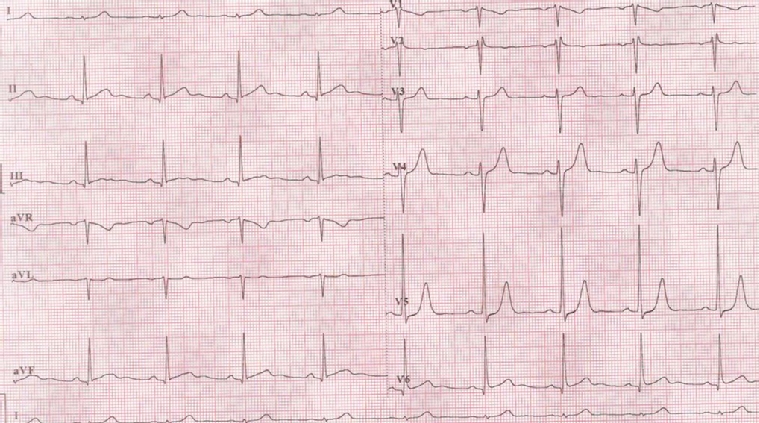The case
A 50-year old female with no personal or family history of sudden cardiac death presented to our institution for a routine cardiovascular check-up. The athlete competed in air races nationally and internationally for the last 25 years. She reported no symptoms and no impairment of her physical performance. She does not take any medication and denied the use of illicit drugs.
Clinical examination:
- Body surface area (BSA) was 1.69
- Blood pressure and HR were within normal limits
- Cardiac auscultation revealed a mid to late systolic murmur.
- No peripheral oedema
Figure 1: 12-lead ECG
The resting ECG is normal, with training related changes including mild sinus bradycardia of 56 b.p.m and an incomplete bundle branch block:

Test your knowledge
Interested in learning more? Access the ESC e-learning platform and discover the EAPC Sports Cardiology online courses.
EAPC online educational courses are only accessible to EAPC Ivory, Silver and Gold Members. Not yet an EAPC member?
Note: The views and opinions expressed on this page are those of the author and may not be accepted by others. While every attempt is made to keep the information up to date, there is always going to be a lag in updating information. The reader is encouraged to read this in conjunction with appropriate ESC Guidelines. The material on this page is for educational purposes and is not for use as a definitive management strategy in the care of patients. Quiz material in the site are only examples and do not guarantee outcomes from formal examinations.





 Our mission: To reduce the burden of cardiovascular disease.
Our mission: To reduce the burden of cardiovascular disease.